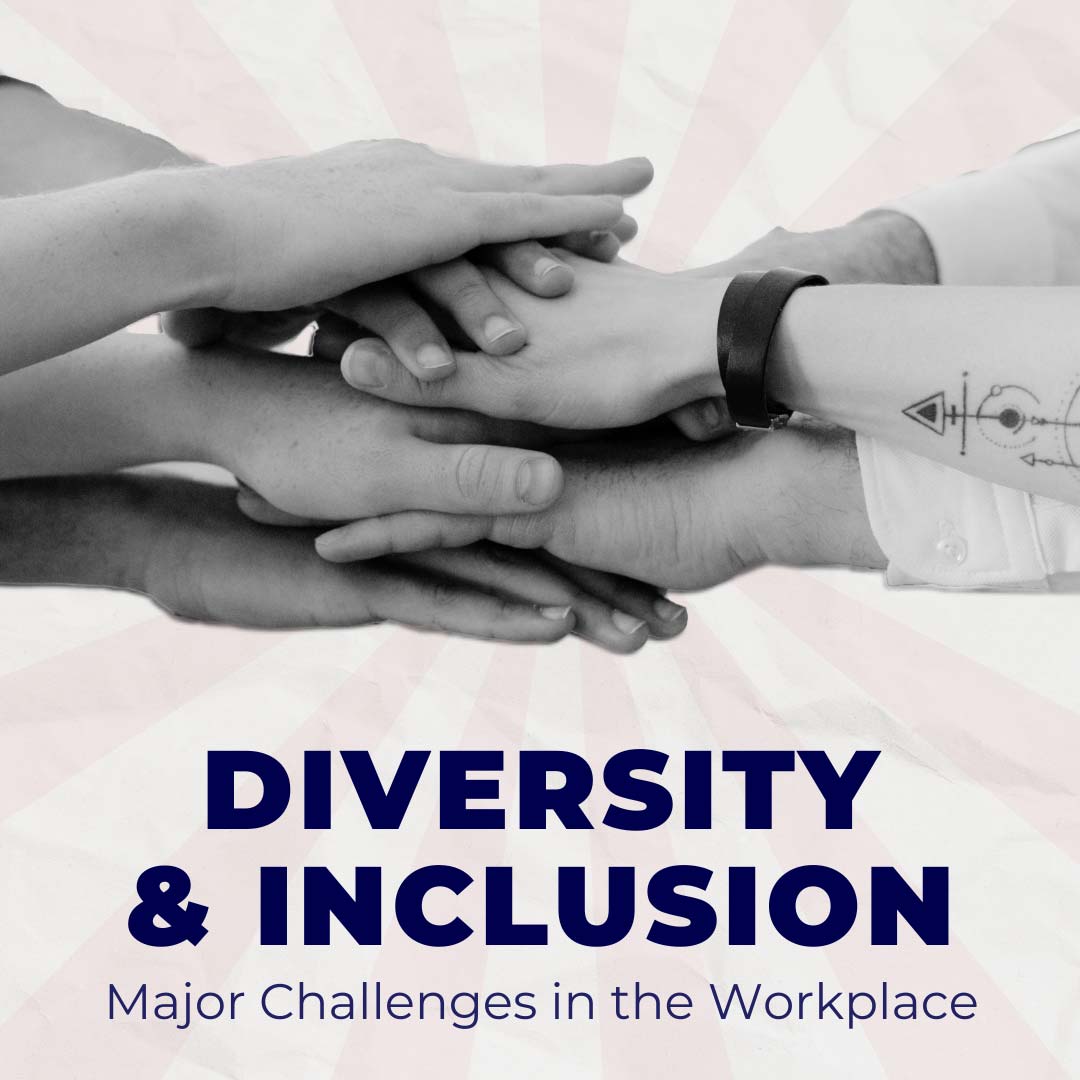CATEGORIES
#Careers #Inclusion and Impact #Work CultureOverview:
- What does it mean to have a diverse work culture?
- Major Challenges of Diversity and Inclusion in the Workplace
- How to navigate these challenges more effectively in the workplace
Almost all top firms and companies in the contemporary work culture promote the ideals of diversity and inclusion. While its importance is widely accepted nowadays there are varied challenges to it in the workplace. They range from overt issues such as communication to more implicit ones such as unconscious bias and ignorance. While companies are increasingly trying to address these issues effectively, proper policy framework and implementation are still required.
This article will discuss five major challenges of diversity and inclusion in the workplace. But first, let us understand what it means to have a diverse company culture.
A Diverse and Inclusive Workspace
It is important to understand exactly what diversity and inclusion in the workplace mean. Company culture should promote hiring individuals from various backgrounds irrespective of their country, gender, religion, race, ethnicity, or sexual orientation. This will count for a truly diverse company. A company that believes in empowerment and a work environment without bias and prejudice. That encourages employees to express their ideas freely and effectively.
Companies are increasingly adopting D&I strategies to attract larger talent. Companies are starting to invest in individuals who can add immense value to their organizations. However, there are a variety of challenges to creating a diverse and inclusive workplace.

Challenges of Diversity and Inclusion in the Workplace
Having discussed the growing importance of having a diverse and inclusive workplace, It is equally crucial to understand its challenges. Some of the major challenges of the same are as follows:
1. Communication Issues
When the team hails from different parts of the country or the world, communication becomes a major challenge. When team members converse in mainly one dominant language, the non-native speakers find it difficult to communicate effectively. This can stop them from nurturing proper relationships in the workplace.
Most workplaces standardize English as the primary language for all communication. However, people whose first language is not English might still find it difficult to communicate effectively.

2. Cultural Conflict
Every other culture has certain rules and practices. Some might be implicit such as particular beliefs. Others carry a more explicit meaning such as keeping a particular ornament on a desk for religious reasons. Another example that comes to mind is the Filipino Resilience that is an innate part of their identity. The conflict arises when one fails to respect one another’s culture, this may lead to appropriation, mocking, and even disrespect. This often happens due to the lack of proper knowledge and awareness.
3. Discrimination
Certain employees may feel discriminated against more than others. People of color, employees belonging to the lgbtq+ community, and women have historically been discriminated against the most. This remains one of the major challenges faced in the workplace. Unconscious bias such as differences in the pay grade, mansplaining, etc. among others can be seen as discriminating practices.
4. Lack of Training on D&I
Lack of training from organizations on the sensitive topics of diversity and inclusion is one of the major challenges. Issues such as unconscious bias, communication issues, work environment, hierarchy, and soft skills can be included during one’s training. This applies to both new and existing employees to make D&I policies more efficient.

5. Inequitable Inclusion
There is much more effort needed on the part of the company to increase inclusivity in the true sense. Inequitable inclusion is another one of the major challenges of D&I in the workplace. More than merely promoting diversity is required. For example, inclusive space for an openly gay person and that of women can be quite different.
Effective communication and employee satisfaction programs such as team-building exercises, feedback forms, etc can lead to a more equitable workspace.
Navigating the Challenges
Navigating the challenges of D&I can be a multifaceted paradigm involving a continuous straight for betterment and learning. Let us see how we can implement some of these strategies.
- Scheduling cultural training with ways of dealing with sensitive topics such as prejudice and cultural bias.
- Creating an inclusive workspace focused on equitable inclusion policies. This can be reinforced with an open forum for anyone who wishes to put out their concerns.
- Set inclusion goals and effective ways to measure progress
- Set up an inclusive leadership style in the management to execute the goal of building up an inclusive workplace.
- Recognize and incorporate celebrations that are of immense importance to other communities. For example: Pride month in June, Black History Month, etc.
- Establish employee resource groups (ERGs) such as for women, LGBTQ+ employees, and religious minorities among others. They can act as an added support system for people who might feel under-represented.
Conclusion:
There are varied challenges of diversity and inclusion in the workplace. Companies are realizing that the mere introduction of D&I policies is not enough. It requires a steadfast commitment on the part of the organization to make them successful. Diversity and Inclusion help any organization grow substantially and scale up in the international market. On the upside, they can also lead to the creation of a fairer and more equitable workforce.
FAQs:
What are some of the benefits of having a diverse and inclusive workplace?
There are many benefits of diversity and inclusion in the workplace. They can help foster innovation and fresh perspectives in the workplace. An inclusive and diverse workplace also leads to increased efficiency and productivity. They are also important because they drive up employee satisfaction and lead to a more just and fair work environment.
What are some common challenges in incorporating a diverse and inclusive workplace?
Some of the common challenges in incorporating a diverse and inclusive workplace are:
- Unconscious bias
- Cultural conflict
- Discrimination
- Lack of communication
- Differential treatment.
What are some best practices for implementing diversity and inclusion in the workplace?
Some of the best practices that employers can implement to promote D&I in the workplace are:
- Implementing D&I policies for hiring across departments
- Diversity training
- Soft-Skills training
- Ensuring diverse representation in leadership and decision-making roles.
- Implementing mentorship and sponsorship programs to support the career development of underrepresented groups.
What are D&I policies in the Workplace?
(D&I) policies are designed to promote fair treatment, equal opportunities, and representation. This applies to all employees, regardless of their backgrounds. This helps create a positive work environment.


